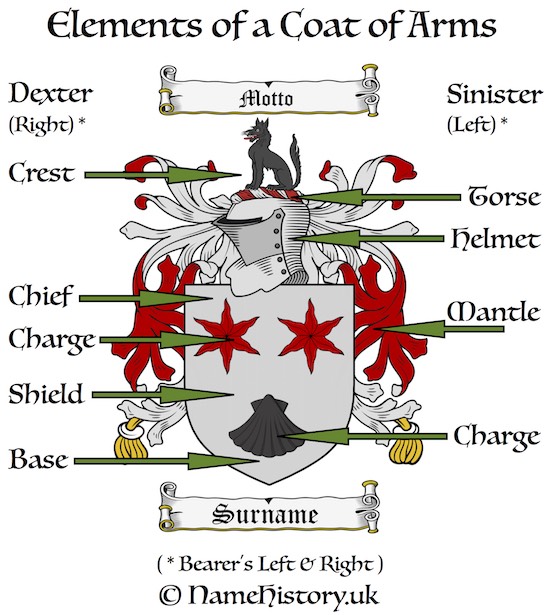Our frequently asked questions (FAQs) are included below. Should you have any questions not covered here, please see our Help page or feel free to contact us for a quick reply.
Q: How long does it take to process and send an order?
A: Most orders are completed and sent within 1-2 days. Please bear in mind that these products are ‘made to order‘ and are not simply ‘off-the-shelf‘ or ‘ready-made‘ items and may require additional research, so please allow a few days order processing.
Also, please allow several days longer if ordering during our busiest times of the year, especially during November and December. Our website will be updated with more details during particularly busy times.
All products A4 size and below are sent in card-backed envelopes for protection. A3 and 14×11 sizes are sent in a postal tube. We will send you an email as soon as an order has been sent so that you know it’s on its way.

Q: Which family coat of arms do you use?
A: Heraldry is not an exact science. During the period of early heraldry, the design and images on coats of arms were often granted by heraldic authorities by writing them in the records via the spoken word of the registrant, so these are subject to interpretation.
Some surnames do not have a coat of arms, whereas others may have several or dozens. The normally use the coat of arms most associated with the surname or taken from the oldest known on record where possible (many coats of arms are recorded without place-names or dates).
Regarding surnames, genealogical experts suggest that a surname can have 6-8 spelling variants, with many having 20 or more. However, this is not accurate for coats or arms because many of the name variants will have their own distinct coats of arms registered. So this is also taken into account allowing us to use the best or most accurate coat of arms for the surname provided.
Also, please bear in mind that coats of arms are granted to individuals, and not to the actual surnames. It is, however, considered acceptable to display a coat of arms that was granted to someone with whom you share your surname with.

Q: Can I choose my own coat of arms?
A: The coats of arms (sometimes called a ‘family crest’) that we use are normally based on the coat of arms most associated with the surname. Many surnames have more than one coat of arms associated with it (some have dozens), so if there’s one in particular that you’ve seen that you would like us to use, please send us an image or an accurate description and we should be able to create this for you.
It’s not currently possible to include preview images of coats of arms bearing in mind that there are more than 60,000 coats of arms recorded in “Burke’s General Armory” alone! This is a leading source created in 1842 and updated in 1884 by Sir Bernard Burke, King of Arms to Queen Victoria. Also, these are all recorded as text (not images) in the form of a ‘heraldic blazon‘, which is a description of the arms, crest and motto (if recorded).
If you would like to see a preview image before ordering we can email you an attachment if we have already created an image for the coat of arms, or send you a description.
Please note that we do not ‘grant‘ or ‘register‘ coats of arms, but provide products displaying coats of arms for almost any surname where a coat of arms has previously been properly registered or granted.

Q: How much is postage and where do you send to?
A: We normally send orders by First Class post within the UK and by Airmail to destinations outside of the UK. Please refer to each of the product’s pages for specific information (normally towards the bottom of the page). Also, please check our Order Terms page for additional information.

Q: Can I buy these products anywhere else?
A: We create and sell these products ourselves from our own websites and some of our products are listed by us on other major websites such as Amazon and eBay. The surname history and coats of arms products are unique to us, so they are not created by other suppliers.
Feel free to contact us with any other questions not covered here or within our Help pages.
Links

